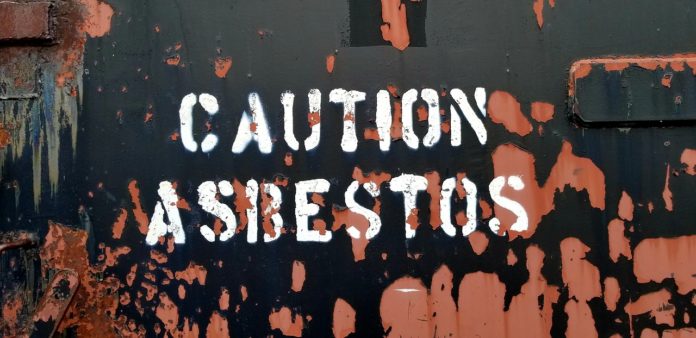Asbestos remains the number one killer in the workplace. Across the globe, an estimated 125 million workers are exposed to occupational asbestos, with those working in the industrial and construction sectors at much greater risk of encountering it. Despite the use of asbestos becoming illegal in the UK, older buildings still pose a threat to plumbers, electricians and those working in similar fields.
Under the Control of Asbestos Regulations, 2012, organisations have a legal obligation to protect these workers from the dangers of asbestos exposure. Most commonly used as an insulation material up until the 1980s, asbestos is typically found in ceiling and floor tiles, roof shingles and water drainage, and workers need to know how to manage it safely.
From carrying out a thorough risk assessment to providing workers with an asbestos awareness course, it’s an employer’s duty to implement measures which help to manage and control the risks of occupational asbestos.
Why is Asbestos Dangerous?
The effects of asbestos exposure typically take a long time to develop. Although the latest HSE figures show that 5,000 people still die every year due to asbestos-related diseases, it’s important to point out that these deaths are due to prolonged exposure in the past, back when the dangers of asbestos were still unclear.
However, despite the fact it’s no longer used in construction, those dangers still remain very much a threat to today’s workers. Since it was used so often during construction throughout the 60s and 70s, asbestos can still be found in industrial or residential properties built prior to the turn of the century.
Asbestos becomes dangerous once it’s been disturbed, since this will release fibres which can then be inhaled into the lungs and cause serious damage. Although the symptoms and effects of exposure usually take years to become evident, this can eventually lead to deadly illnesses such as lung cancer, asbestosis and mesothelioma.
How to Manage Asbestos in the Workplace
The long-term effects of asbestos exposure can often prove fatal, which is why it’s so important for workers to know how to handle it safely. As an employer, it’s your responsibility to provide employees with this valuable knowledge and to manage the risks posed by such a potentially dangerous substance. Here’s how:
Provide Asbestos Awareness Training
When an employee is likely to encounter asbestos while at work, providing them with adequate asbestos awareness training is now a legal requirement. Current health and safety regulations mean it’s mandatory for workers to be made fully aware of the dangers posed by asbestos and the procedures they should follow to handle it safely.
Most commonly delivered through an online course, asbestos training offers employees a full understanding of the risks involved with exposure to asbestos, providing them with the tools and knowledge required to fulfil your legal obligations. Once they’re aware of how to identify asbestos and the safe working practises they should follow, the risk to each employee’s health is significantly reduced.
Identify and Record Any Present Asbestos
Despite the obvious dangers involved, employers aren’t actually legally obliged to remove asbestos from their premises. According to the Health and Safety Executive (HSE), it’s usually safer to leave asbestos alone if it’s not likely to be disturbed or worked on, since the removal process will inevitably present its own dangers and risks.
Instead, organisations have a responsibility to identify any existing asbestos on the premises and maintain clear records as to where it can be found – as well as its overall condition. If you find asbestos in poor condition (or in a place where it’s likely to be disturbed), you’ll need to decide whether to have it removed, repaired or to seal off that area entirely.
Evaluate the Risk of Exposure
Once you’ve carried out an asbestos conditions survey throughout the building, you’ll need to complete a risk assessment to ascertain who might be at risk of exposure. In an ideal situation, your workers will be able to complete the project without disturbing the asbestos whatsoever, but sometimes this simply isn’t a viable option.
When asbestos is likely to be disturbed, the risk of exposure is inevitably increased, and your risk assessment needs to outline possible control measures to minimise those dangers. Of course, employees must be made fully aware of these measures, and you then need to implement the actions you’ve promised to take.








